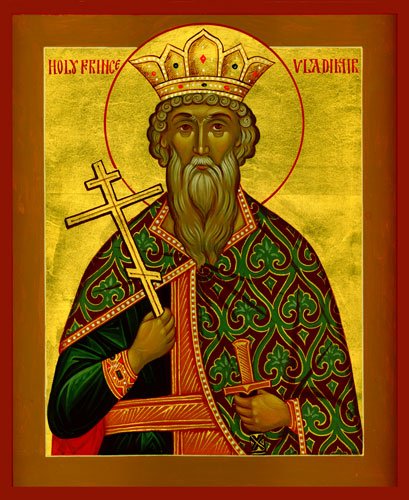I am sure that most people only think about Christianity coming to the area that was known as Rus in the 10th century when Volodymyr the Great had all of the citizens of his kingdom baptized (988). The roots of Christianity, as you will see, were already planted in this area of the world much earlier.
In the 2nd century the Crimean Christian community was replenished by Christian, Greek and Jewish exiles banished by Emperor Trajan. Then in the 2nd and 3rd centuries the Goths, who actually migrated from Scandinavia in the 1st century and settled on the southern shores of the Baltic Sea and the lower portion of the Vistula River, moved to the area between the Don and the Dniester rivers, settling southward, along both banks of the Dnieper river. They destroyed the Greek colonies along the Black Sea as well as all signs of Christianity. However, Christians captured by the Goths spread their religion among their captors. Once the Roman Empire recognized Christianity early in the 4th century (i.e., Edict of Milan 313), a large portion of the Goths also converted.
 During the 3rd century the first Scythian Eparchy was established in the city of Toma, later called Constance. It served Christians along the Black Sea between the Dniester and Dnieper rivers. A bishop by the name of Evanhelic actually served in that area between 284-292 CE.
During the 3rd century the first Scythian Eparchy was established in the city of Toma, later called Constance. It served Christians along the Black Sea between the Dniester and Dnieper rivers. A bishop by the name of Evanhelic actually served in that area between 284-292 CE.
The Church historians writing during the 3rd to 5th centuries considered Scythia to be one of the countries where Christianity was established. A number of them attest to the fact that St. Andrew was in Scythia. This is probably why the Slavic three-bar cross is called the Cross of St. Andrew.
Small stone and marble crosses were widespread among the Christians in the Kiev region and in Volynia. They date from between the 4th and 5th centuries. They are not symmetrical and have no images.
Crosses found that date from the 6th century depict the suffering of Christ while 7th century crosses show Christ’s crucifixion together with other references to his death. These crosses were discovered during archeological digs in this area in the 19th and 20th centuries.
Syrian and Armenian writings first use the term “Rus” to refer to the lands north of the Caucasus. In later years the term was applied to the lands around present-day Chernihiv and Pereyaslav.
By the end of the 8th century, Christian communities were organized in the middle and upper Dnieper areas. In the 20th century archeologists discovered Christian burial grounds in those areas dating from the 8th century.
In 860 the first bishop was assigned to Rus to minister to Christian communities composed of Varangians and Slavs and SS Cyril and Methodius visited this area
